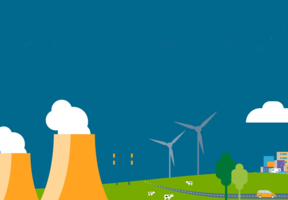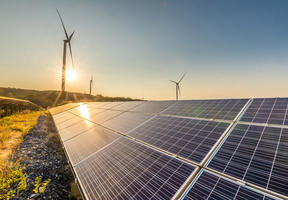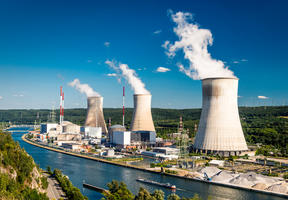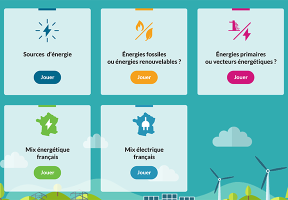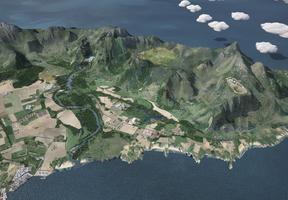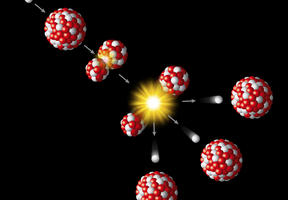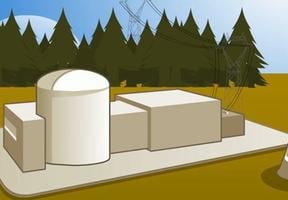
1. From cradle to grave
The cycle begins with . Once extracted from the ore, uranium is enriched in the fissile U-235 and arranged into assemblies of rods, which are then introduced into the reactor core. After it has reached the end of its useful life, the radioactive fuel is left to cool in a storage pond then, in some countries like France, reprocessed to recycle the usable material. The final waste is then stored, bringing the cycle to an end.

2. Uranium mines
Uranium, which is used to make nuclear fuel, occurs in its natural state in granite and sedimentary rock. Uranium may be extracted from open-pit or underground mines or, increasingly, using the in situ leach (ILS) method. In deposits currently being mined, the concentration of uranium ranges from 20% to 0.1%. Shown here is the McClean Lake open-pit mine in Canada.

3. Nearly a century's worth of reserves
The ore is transferred to a mill, usually located close to the mine, where it is sorted, crushed and ground before undergoing a series of chemical operations to isolate and purify the uranium. Worldwide, there are sufficient economically recoverable reserves to supply the civil nuclear industry for nearly a century. This image shows the Areva plant near the Arlit mine in Niger's Aïr desert.

4. The "yellowcake" stage
The purified ore is given the form of a solid concentrate with a very bright yellowy-orange color and doughy texture (hence the name "yellowcake"). It contains around 75% uranium, or 750 kilograms per metric ton. The yellowcake is packaged into barrels before being sent to conversion facilities for further chemical processing. This image shows yellowcake filtering at the Arlit plant in Niger.

5. Preparation for enrichment
Conversion facilities convert the yellowcake into uranium hexafluoride. Once in this gaseous form, the uranium can be enriched in the U-235 isotope to a point where it is suitable for use as reactor fuel. This photo shows a uranium conversion facility in Isfahan, Iran, a country whose nuclear ambitions were the subject of long negotiations.

6. Giant industrial facilities
Enriching uranium in the U-235 isotope is an essential step in making usable fuel. The two methods currently used – both practiced in enormous industrial facilities – are the gaseous diffusion process and the centrifuge process. This photo shows a centrifuge cascade at the Georges Besse 2 facility at the Tricastin site in France.

7. Rod manufacture
Once the uranium has been enriched, it is converted into uranium(IV) oxide (UO2) and pressed into pellets. These are then encased in zirconium sheaths, known as "rods", measuring around 4.5 meters long. Several hundred rods are bundled together into an "assembly" containing some 500 kilograms of enriched uranium. Shown here is an assembly being loaded into the reactor vessel. Note that this is just a model used for training. In real life, the operation would take place remotely, under water, to protect the operators from radiation from the irradiated fuel.

8. Into the storage pond
Depending on the model, a reactor's vessel holds between 120 and 250 assemblies. These remain in the vessel for between three and five years on average, and are renewed progressively during regular replacements. Once the fuel is spent –a process called "burn-up" –, the assemblies are moved to storage "ponds", where the water shields the radiation and cools the components. There they remain for four to five years. This photo shows the storage pond at the La Hague reprocessing center, in France.

9. The Fukushima ponds
In Japan, the Fukushima plant's unit 4 pond was located at a height, above the top of the reactor. When the tsunami struck on March 11, 2011, triggering the accident, there were 1,533 assemblies in the pool, 202 of which were unused (photo). December 2014 marked the end of a highly technical process to transfer these assemblies to another pool in a safer location.
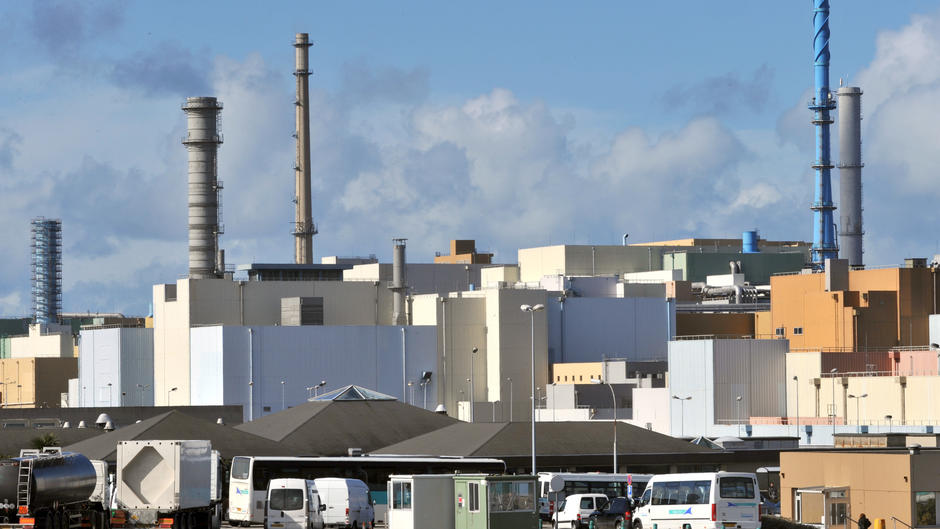
10. Reprocessing facilities
Some countries consider assemblies to be waste as soon as they are removed from the storage pond. Others "reprocess" them by extracting the residual uranium and the plutonium to recycle them in new fuels. Reprocessing facilities can be found in France and the United Kingdom, for example. The La Hague center in France (shown here) works for both domestic nuclear facilities and plants in countries such as Italy, Japan, Germany and Australia.

11. Secure storage
The most radioactive reprocessed material, including plutonium, is stored directly at the La Hague site. The non-recyclable waste is vitrified and placed into canisters, which are then piled up several layers high in pits some 25 meters deep for cooling. The La Hague facility (see photo), for example, has an ultra-high-security building where it stores several dozen metric tons of plutonium for the production of MOX fuel, which can be used in nuclear plants.

12. Reprocessed fuel for export
Fuel recycled from plutonium and waste from reprocessing fuel for a foreign country are repatriated in special shipments, either by train or by sea. The containers used ensure no can escape. Here, a container of MOX fuel is shown being loaded on to a boat at Cherbourg port, for shipment to Japan.

13. "You shall not pass!" say anti-nuclear protesters
Despite all the precautions taken, convoys of radioactive materials are often met with protests from anti-nuclear campaigners, who have on several occasions tried to block their path. Shown here is a protester demonstrating against a special train carrying nuclear waste from the La Hague processing facility in France back to its source in Germany.

14. Storage of low-level radioactive waste
Aside from nuclear fuel and waste, some materials resulting from nuclear activities display low-level or short-lived radioactivity. In France, these can be stored under the supervision of the ANDRA nuclear waste agency at surface disposal facilities. This picture shows waste being placed into sealed drums in Soulaines-Dhuys in eastern France, before being stored in impermeable concrete vaults and covered over in soil.

15. Deep underground storage
Solutions are currently being sought on how to store high-level radioactive waste for very long periods of time (i.e., several hundreds of thousands of years). The preferred method is to store the waste in highly stable geological formations deep below the surface, made from suitable structures such as granite, salt or clay. Shown here is an experimental laboratory with underground tunnels in Bure, in France's Lorraine region.
 This may interest you
This may interest you
See all
